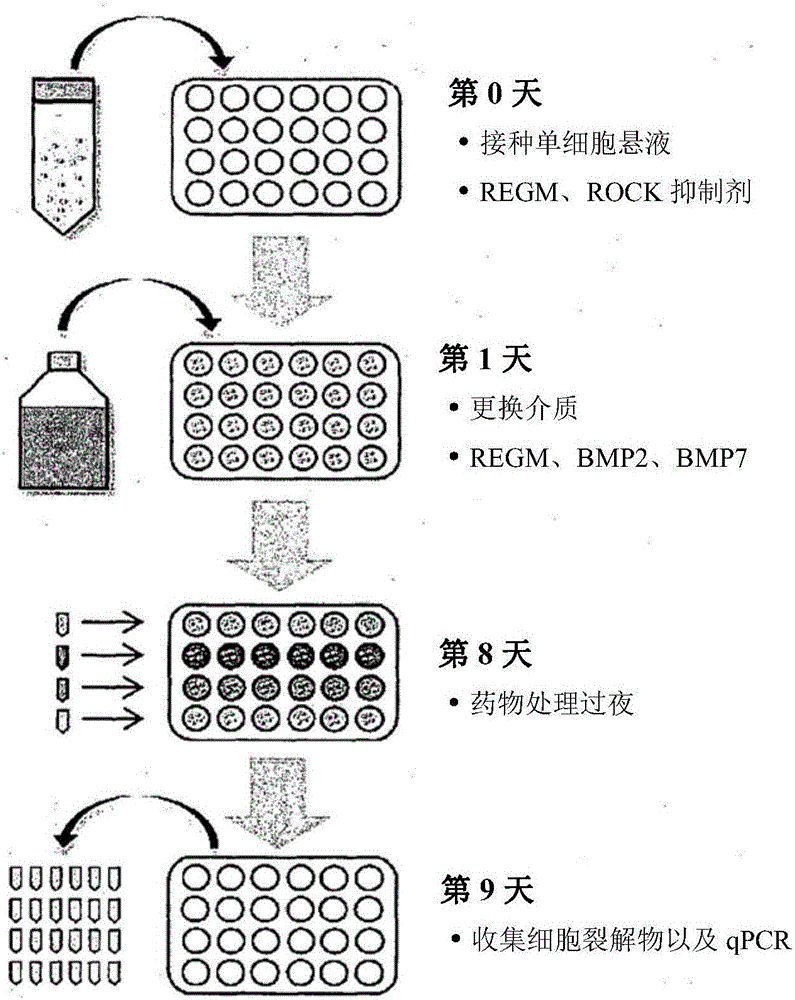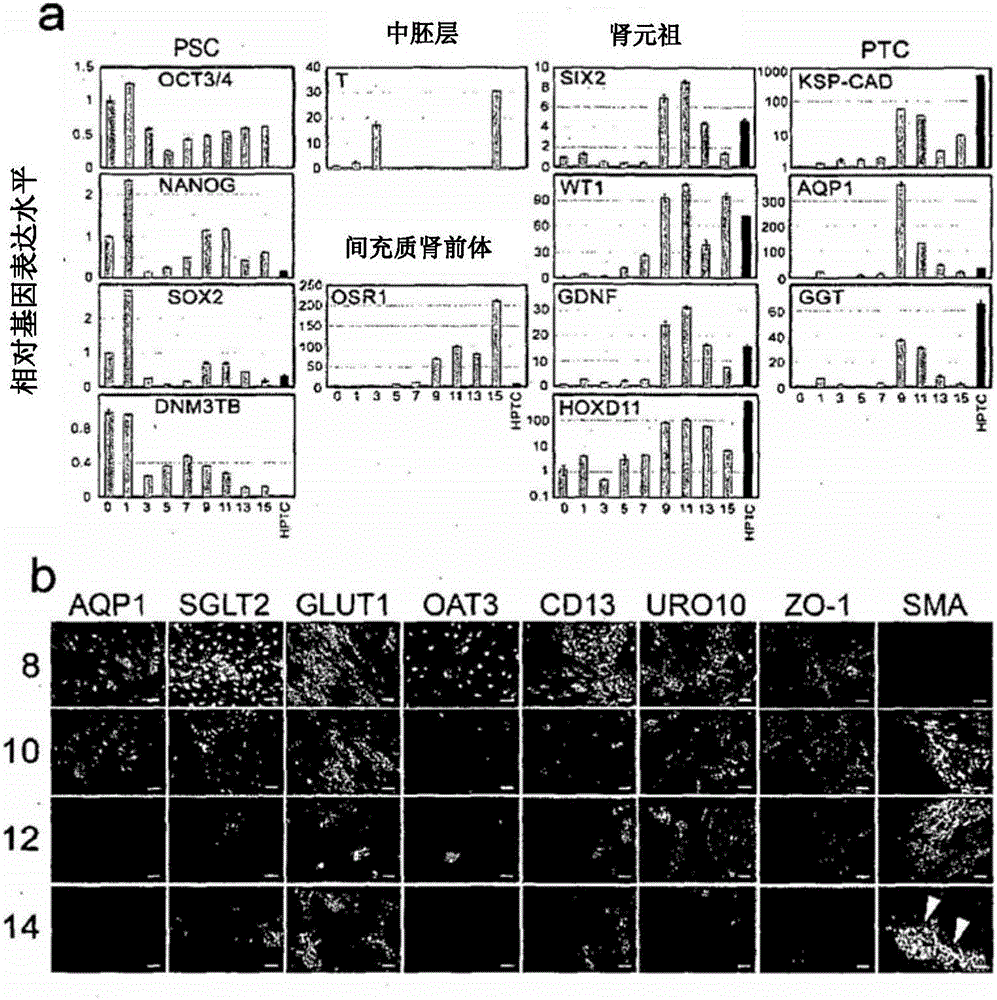Method for differentiating induced pluripotent stem cells into renal proximal tubular cell-like cells
A technology of pluripotent stem cells and renal proximal tubules, applied in the field of generating renal proximal tubule cell-like cells, which can solve the problems of limited application
- Summary
- Abstract
- Description
- Claims
- Application Information
AI Technical Summary
Problems solved by technology
Method used
Image
Examples
Embodiment 1
[0160] Beginning on November 5, 2012, hiPSC-derived HTPC-like cells were treated with two test drugs (rifampicin and paraquat, both nephrotoxicants directly toxic to PTC). Drug response was tested using an in vitro model of renal toxicology based on interleukin 6 / interleukin 8 expression (Li et al., Toxicol. Res. 2 (2013), 352-362). The data show that IL-6 (and in the case of rifampin, IL-8) expression is increased after treatment with PTC-specific nephrotoxicants. This suggests that treatment with PTC-specific nephrotoxicants resulted in a positive response.
[0161] Materials and methods
[0162] All steps are performed using aseptic technique.
[0163] Reagents: mTeSR1 medium Kit: STEM CELL Technologies, Cat. No.: 05850; BD Matrigel TM Basement Membrane Matrix, Low Growth Factor (GFR), BD Biosciences, Cat. No. 356230; Rock Inhibitor (Y-27632) Calbiochem, Cat. No. 688000; Renal Epithelial Basal Medium (REBM), Lonza Biosciences, Cat. No. CC-3191; Cell Isolation Reagent, ...
Embodiment 2
[0189] Using a one-step method for differentiating hiPSCs into HPTC-like cells, drug testing was performed immediately without prior cell collection. The predictive performance of hiPSC-derived cells was determined by evaluating the response to 30 compounds. Automatic classification of results by support vector machine algorithm. Using this method, PTC toxicity can be predicted with high accuracy in humans. Therefore, the one-step differentiation approach combined with machine learning may provide an efficient method for accurately predicting PTC toxicity in humans.
[0190] Materials and methods
[0191] Expansion and differentiation of hiPSCs: iPS(foreskin)-4, iPSIMR90-4 and iPS DF19-9-11T.H cells were obtained from WiCell Research Institute (Madison, WI, USA). Work with these hiPSC lines was approved by the Institutional Review Board of the National University of Singapore (NUS-IRB reference code: 13-437). Undifferentiated cells were expanded in multi-well plates coated...
PUM
 Login to View More
Login to View More Abstract
Description
Claims
Application Information
 Login to View More
Login to View More - R&D
- Intellectual Property
- Life Sciences
- Materials
- Tech Scout
- Unparalleled Data Quality
- Higher Quality Content
- 60% Fewer Hallucinations
Browse by: Latest US Patents, China's latest patents, Technical Efficacy Thesaurus, Application Domain, Technology Topic, Popular Technical Reports.
© 2025 PatSnap. All rights reserved.Legal|Privacy policy|Modern Slavery Act Transparency Statement|Sitemap|About US| Contact US: help@patsnap.com



